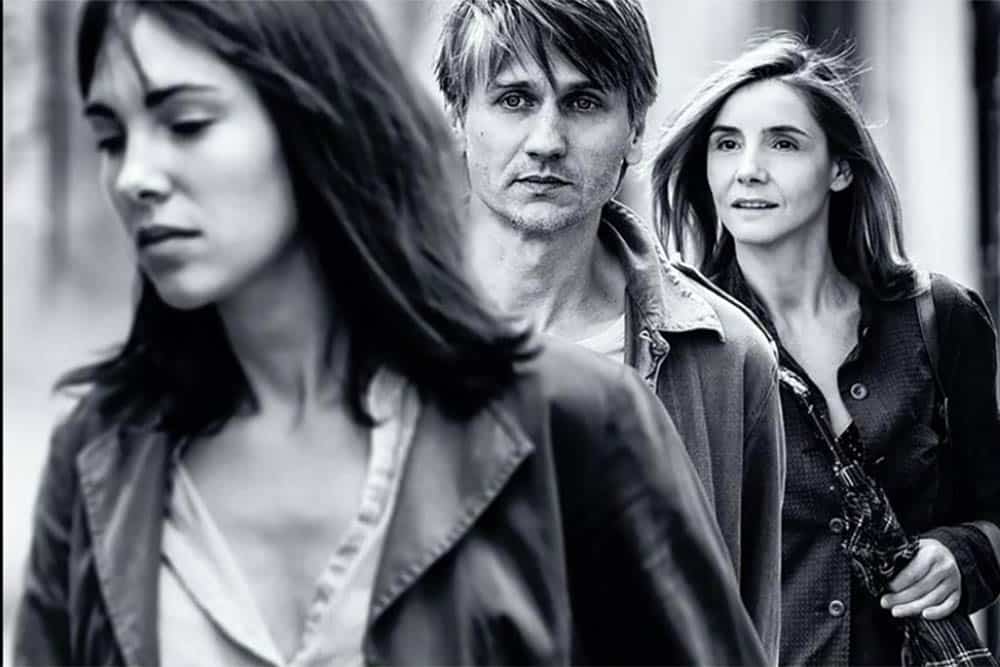
In under 75 minutes, Philippe Garrel presents with clarity pretty much all that needs to be said about adultery, and he does so compassionately and without overdramatizing an emotionally complex and contradictory set of circumstances.
Pierre (Stanislas Merhar) is making a documentary about an old man who was a member of the French Resistance during WWII. While the man speaks, his wife fetches cookies. She has a different perspective on her husband and doesn’t seem to accord the moment the respect it should merit.
Pierre is abetted by his wife, Manon (Clotilde Courau), who happens to have the name of a famous flighty, sexually voracious heroine of French literature. Pierre begins an affair, comme ca, with an archivist named Elisabeth (Lena Paugam), telling himself he’s being honest with her that he’s married.
He’s the classic, almost parodically disengaged, “emotionally unavailable” male who stands or flops about impassively, as if continually drained. In the manner of one of Francois Truffaut’s magisterial narrators, a voice (Louis Garrel, the director’s son) calmly informs us of Pierre’s ambiguous and illogical thought processes. Pierre accepts his culture’s classic double standard on male infidelity while recognizing the problem, which confronts him when he learns something disturbing.
Elisabeth is hung up on Pierre, in accordance with Carson McCullers‘ observation in The Ballad of the Sad Cafe, that there is always an imbalance, that one is always the lover and one the beloved. She’s secondary in his life and the film, but hers is a piercing characterization. Although adopting and examining the male point of view, emotions and sympathies are reserved for the women In The Shadow of Women (L’ombre des femmes), and some scenes show them relating to each other. A dialogue between mother and daughter balances honest tensions with obvious love and regard. In another scene, Pierre jealously regards three women chatting as he realizes that his wife has aspects and angles that don’t belong to him.
Very few films examine the simple mechanics of adultery, and one that did is Truffaut’s The Soft Skin (1964). Garrel’s debt to Truffaut is confessed and obvious. Renato Berta shoots In the Shadow of Women in widescreen, in richly shaded black and white, deliberately to evoke the French New Wave as much as to distill this calmly suspenseful story to its essence. One richly conceived image presents Pierre eating alone on his bed, his shadow cast on the wall as his only evanescent company, as though he has become his shadow or else been divorced from it.
Here is Garrel, equally capable of a sprawling three-hour emotional epic like Regular Lovers (2004) or of this compact, swiftly sketched yet dense and deep chamber drama of an ordinary couple. He’s been plugging away at this since the 1960s, quietly becoming one of the world’s greatest filmmakers.


![Call for Papers: All Things Reconsidered [MUSIC] May-August 2024](https://www.popmatters.com/wp-content/uploads/2024/04/all-things-reconsidered-call-music-may-2024-720x380.jpg)



